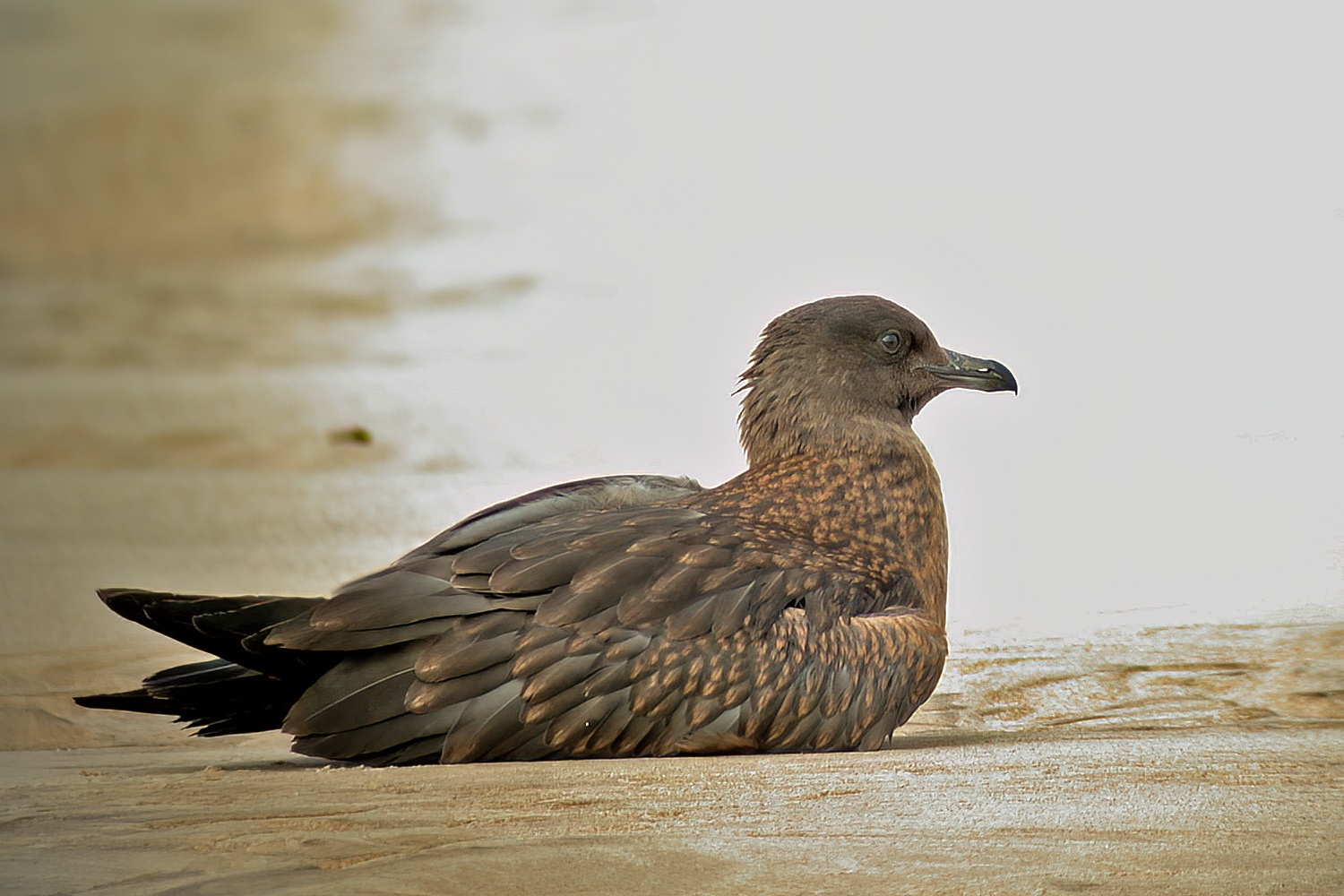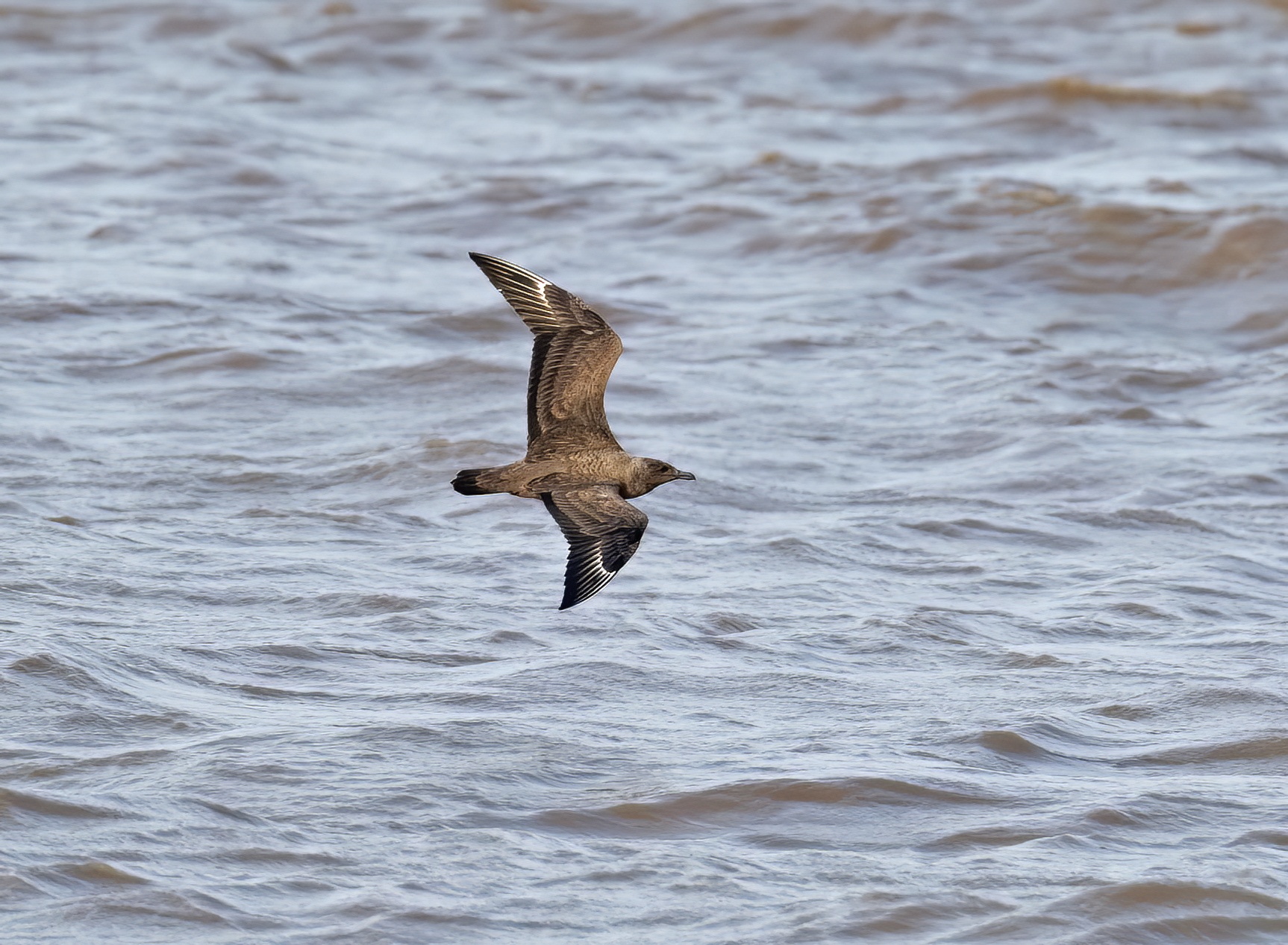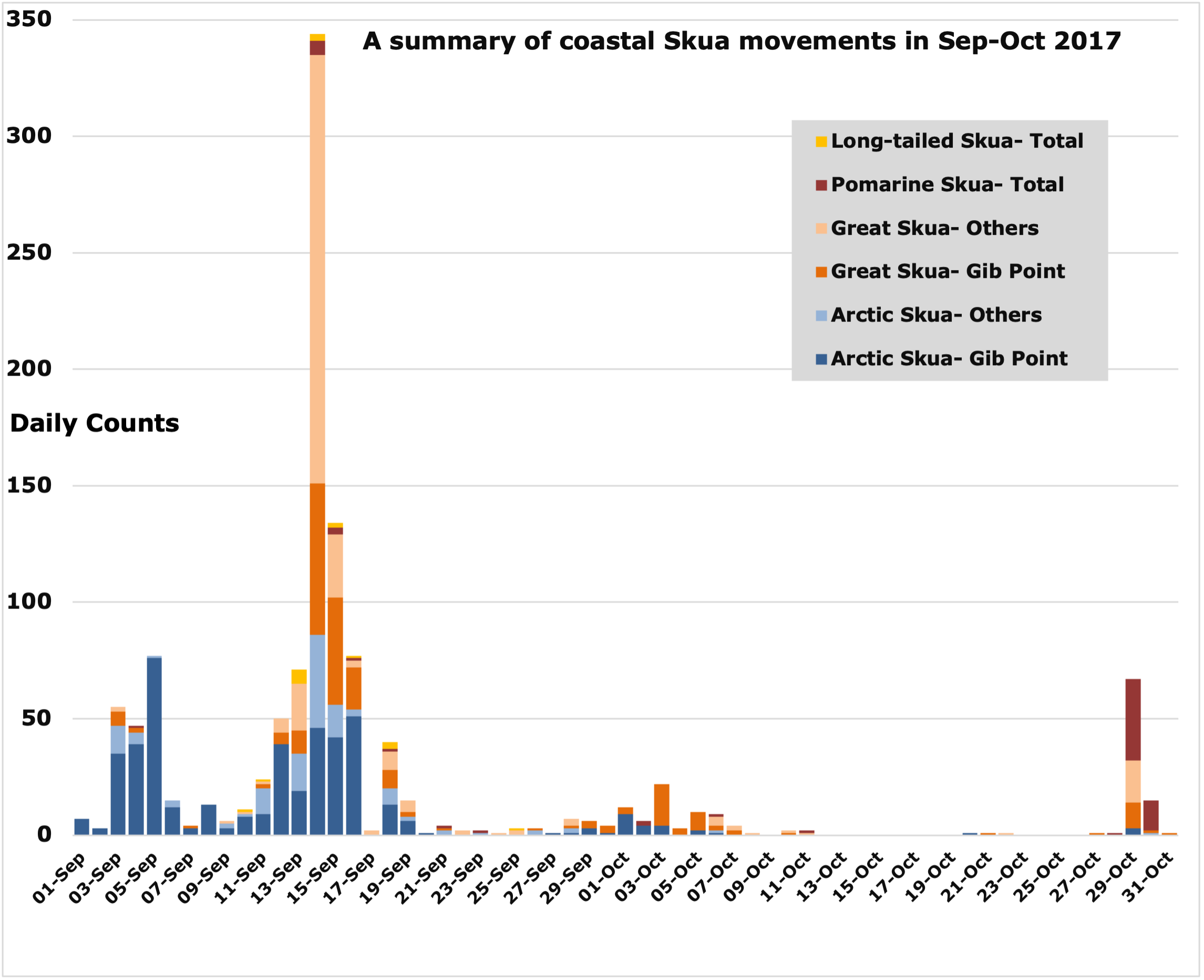Great Skua Catharactus skua
Fairly common autumn passage migrant, mainly August to November and very scarce in winter and spring. Rare inland.


In contrast to Arctic Skua, S. parasiticus, the UK breeding population of “Bonxie” has been booming though Seabird Monitoring Programme has not published definitive trend data for the period from 2000; more than half of the world’s population breed along the north-western seaboard of Scotland and Ireland. The figures that follow are illustrative from LBR. They refer to annual totals of site peak monthly counts. These ranged from 150 in 2015 to 400 in 2014 with an average of around 250 per year. January usually sees a few birds but then it is very quiet until August migration begins.
There have been five recoveries of Shetland-ringed chicks in Lincolnshire: the first two were ringed on Unst in July 1939 and found at Friskney and at Freiston in September 1939, one alive the other freshly dead; two nestlings ringed in different years on Foula were found dead near Holbeach St. Matthew in January 1974, and the other found long-dead at Wrangle Marsh in January 1977. Unusually a bird colour ringed as a nestling at Flakmyrvatna, Bjornoya on Bear Island (74°28'N 18°46'E) in 2011 was seen inland at Kirkby GP on April 26th and 28th 2012. The autumn migration is split between August-November (as a proportion of total annual records) as follows: August (5%), September (35%), October (45%) and November (13%). The largest single flock reported was 180 at Sandilands on October 13th, 2014. A large coastal movement of skuas was recorded during 14th-15th September 2017, mainly Great Skuas, and 170 birds were counted at Huttoft and a further 65 off Gibraltar Point. The numbers of all species recorded are presented in the chart below. It is thought migrating skuas often use the rivers heading south-west from The Wash as a short cut to the Severn estuary and 24 Great Skuas were seen circling high at Gedney on September 17th 2017, seemingly heading inland (see the article "Overland autumn skua passage from The Wash" on the Arctic Skua webpage).
.

(Account as per new Birds of Lincolnshire (2021), included September 2022)
